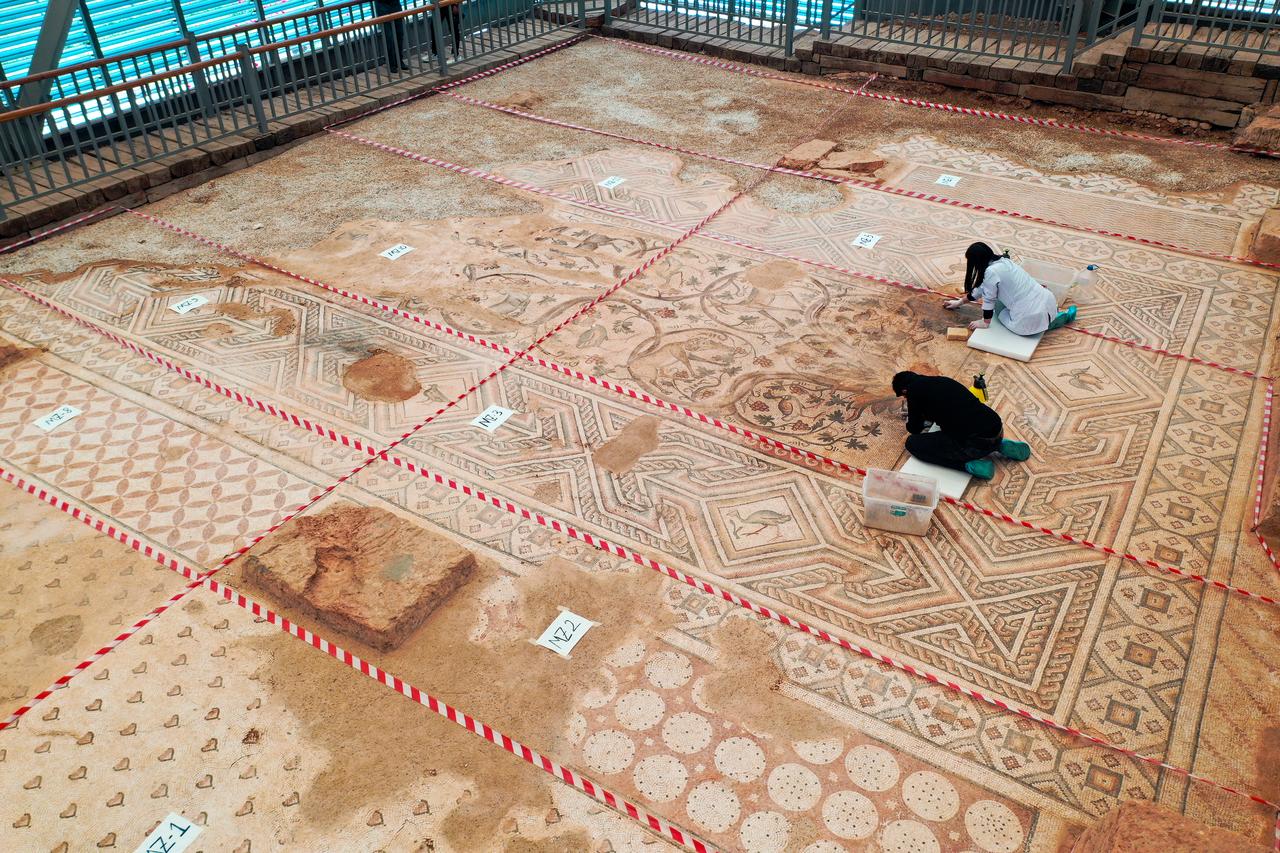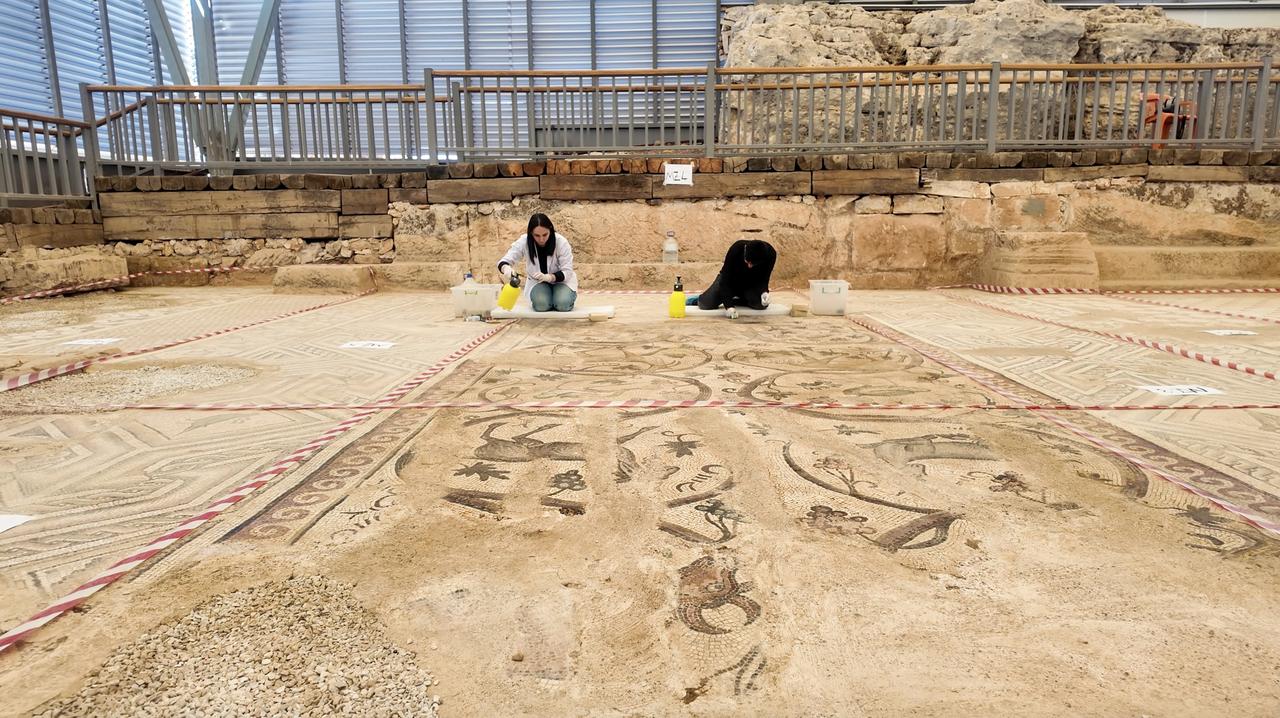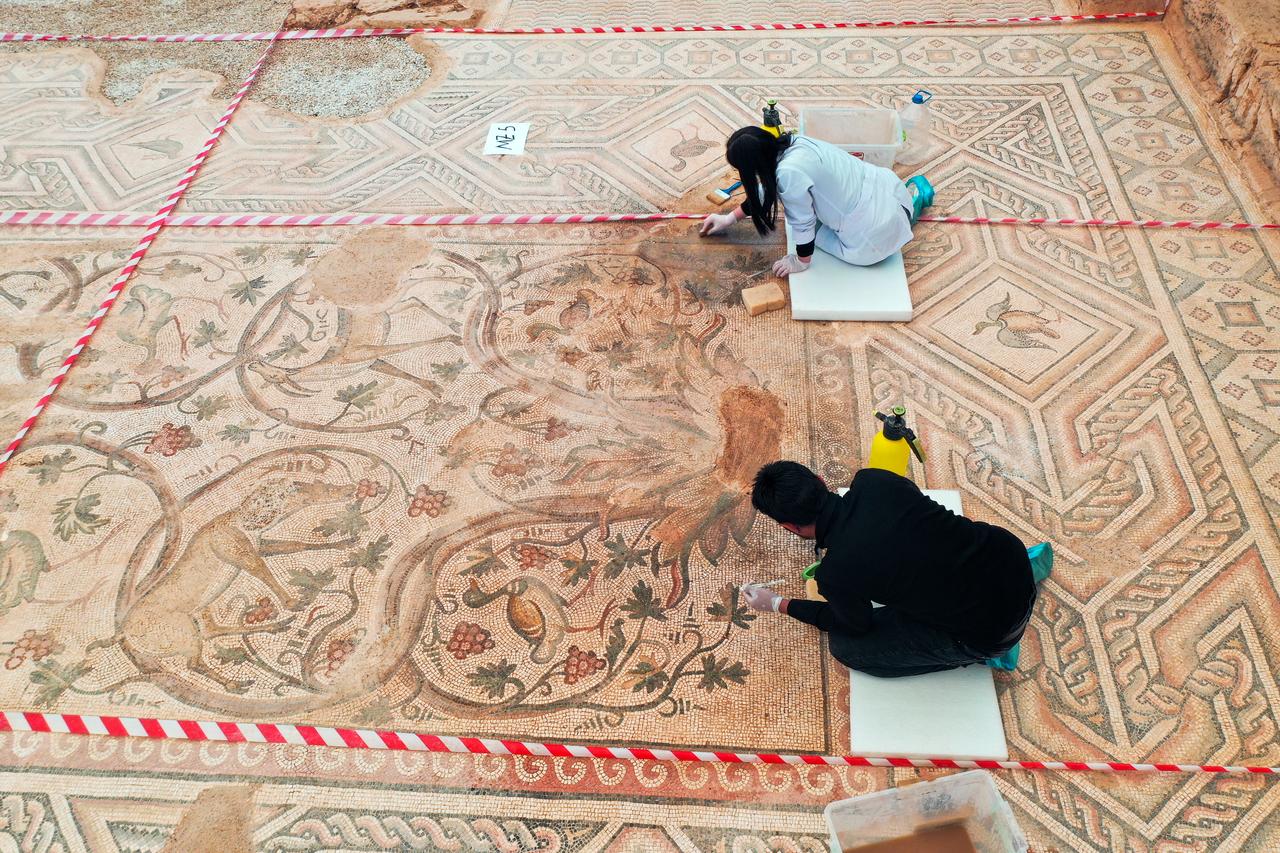
One of the largest and most captivating mosaics in southeastern Türkiye is once again under the spotlight. Located in the ancient city of—one of the five major urban centers of the Kingdom of Commagene—a 125-square-meter floor mosaic dating back to the fifth century A.D. is currently undergoing cleaning and conservation.
The impressive piece was first uncovered in 2009 during archaeological excavations of a basilica. Its sheer size and intricate artistry continue to attract the attention of both experts and visitors. The mosaic features three-dimensional cube patterns, geometric shapes, and symbols reflecting the spiritual world of Late Antiquity.

At the heart of the design is a fascinating array of 3D cube motifs that bear a striking resemblance to contemporary optical illusion art. These designs are interwoven with geometrical elements and culturally significant symbols, distinguishing the mosaic from typical animal-themed Roman works.
“This 1,500-year-old floor mosaic is unlike the traditional ones featuring lions or deer,” says Mehmet Alkan, director of the Adiyaman Museum. “Its abstract motifs emphasize the importance of the structure it once adorned—a 5th-century basilica.”
Alkan also highlighted that such visual tricks in ancient mosaics show the advanced artistic sensibilities of the era. "It mirrors today’s optical illusion styles, suggesting the artisans were highly skilled and innovative,” he added.

The mosaic underwent a significant restoration in 2021 by the Gaziantep Regional Laboratory of Restoration and Conservation, under the Ministry of Culture and Tourism. However, environmental factors and the passage of time have led to the need for renewed conservation.
Now, expert teams from the Adiyaman Museum Directorate are conducting delicate cleaning and stabilization efforts. Once the work is completed, the mosaic will be reopened to the public for viewing.
“This is one of the largest single-piece floor mosaics discovered in the region,” Alkan emphasized. “It covers an original area of 155 square meters, of which 125 square meters has survived intact.”

The mosaic is a highlight for visitors to the ancient city of Perre, especially after viewing an introductory documentary shown at the site’s entrance. According to Alkan, many visitors are captivated by the mosaic’s complexity and preserved state, often lingering to take a closer look.
“This artwork is not only a testament to the architectural and artistic mastery of the Late Roman period but also a key cultural attraction for Adiyaman,” said Alkan.
As the Kingdom of Commagene continues to reveal its long-buried treasures, the Perre mosaic serves as a vivid reminder of the region’s sophisticated history, where geometry, spirituality, and aesthetics coalesced in stone.